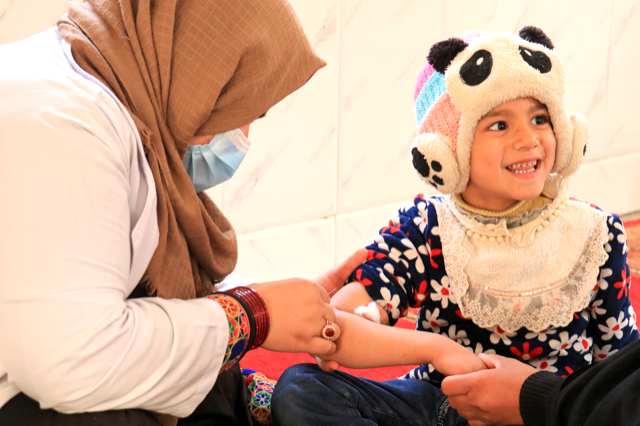The EMR shows large-scale, domestically funded initiatives of government purchase of private healthcare. Formalised stewardship efforts are underway for better quality and more efficient payments. The outstanding needs is to establish a coherent national direction. Dialogue with the private sector and sharing of practical examples emerge as important new needs highlighted by countries.
How and where can the Eastern Mediterranean Region landscape of government purchase of private health care be stewarded towards national health goals for Universal Health Coverage?
The Eastern Mediterranean Region (EMR) has a substantial market of formal private health care providers, co-existing alongside public sector providers. Private providers account for >70% utilisation in some low- and middle-income countries, 30-40% of utilisation in many upper middle-income countries, and increasingly utilised in the high-income countries (PSE for UHC report). Significant large-scale initiatives designed, managed and funded by the state for purchase of private health care are in place in several EMR counties alongside more loosely structured attempts for private sector engagement.
Drawing on insights from 16 country case studies commissioned by the WHO Regional Office for the Eastern Mediterranean (EMRO) on private sector assessment for UHC, this blog presents the contextual modalities of purchasing initiatives, stewardship efforts invested so far and capacity needs underlined by countries for stewarding purchase of private health care more strategically towards the public good.
Purchasing modalities for private health care
Insurance initiatives and standalone contracting are the two main modalities historically deployed for purchase of private health care by states using domestic financing. Hospital care is purchased through significantly large insurance initiatives in nine countries. Additionally, specialty services, disease screening or primary care services are purchased through standalone contracting initiatives in 15 countries. In practice, there is little alignment across both initiatives creating missed opportunities for complementing national insurance with primary care and disease control.
A wide range of private providers are enrolled in purchasing arrangements, comprising of ISO accredited hospitals to small to medium sized hospitals, laboratory networks, family medicine practices set up by non-profits and general practitioners. Beneficiaries of private health care purchased by the state include both the poor and non-poor, with an over-riding focus on expanding access rather than access just for the poor.
Private providers participating in insurance initiatives in EMR are paid through volume-based case payments, but countries are grappling to manage escalating costs with private providers. Some countries have responded by introducing co-payments for accessing private provider or curtailed private provider use only to more privileged beneficiaries. Private providers contracted through standalone initiatives are commonly paid with global budgets providing administrative ease for disbursement but there is growing instances of dissatisfaction within governments of being unbale to hold private providers to accountable. More sophisticated methods involving capitation segregated by providers and services have been introduced in EMR countries that significantly rely on private health care.
Local Stewardship Ecosystem
Purchasing of private health care in EMR has proliferated under different policy drivers, laws, organizational structures, and self-tried best practices for quality assurance, creating challenges of fragmentation but at the same time policy interest and existing groundwork provide opportunities for more strategic purchasing efforts in the future.
Operational arrangements have rapidly proliferated outpacing national policies that still need catching up to provide a directional focus. Disparate agendas of financial protection to health care, search for more efficient health care delivery and economic growth for medical tourism have driven purchase of private health care, each linked to a different set of stakeholders and legal frameworks.
Legal mandate for purchase of private health care is well established in EMR where insurance and contracting are underway but risk mitigation and linking quality with purchase of services require future attention. Mandatory quality assurance for private health care facilities is in place in several EMR countries but emphasis on state enforcement rather than positive imaging and independent accreditation, constrains compliance by the private sector. Purchasing management is more independently managed within insurance programs whereas standalone contracting is usually directly managed by ministries of health creating potential conflict of interest.
Stewardship units and functions are dispersed across different sections of the health ministry, and at times even managed by other ministries, making it difficult to steward changes across the health sector. Growing interest in purchase of private services is spearheaded by executive leadership and national reforms, with health ministries often responding to rather than leading the charge on private health sector engagement.
Looking ahead: country capacity needs for purchasing private health services
The two most expressed needs across low-income, middle-income and high-income countries were building clarity on the purpose for private sector engagement and linking quality regulation with purchasing.
Expertise in payment modalities and risk management, as well as investment in dedicated stewardship structures came in as the third set of needs.
Importantly, political support and fiscal space were not the top priority issues in several EMR countries instead directional coherence, better understanding of the private sector and consolidation of stewardship expertise emerged as the main challenges for more impactful delivery.
Importantly, political support and fiscal space were not the top priority issues in several EMR countries instead directional coherence, better understanding of the private sector and consolidation of stewardship expertise emerged as the main challenges for more impactful delivery.
Conclusion
Purchasing of private health care is being implemented in EMR, benefitting from: domestic funding, growing political support and local country driven iterations. It is however constrained by an operational focus on the means rather than the policy end goal. EMR countries that have long-standing initiatives as well as those with emerging initiatives require new targeted efforts to build a directional focus linked to UHC as well as new platforms and skills for engaging with the private sector. Greater cohesion is required for building complementary links between insurance and standalone contracting. Country demands for cross-fertilisation of practical examples and open-ended dialogue must be centrally embedded future technical support. The lessons extracted are meant to contribute to a regional stewardship agenda to support purchase of private services as part of the UHC 2030 commitment, building on existing local entry points.


